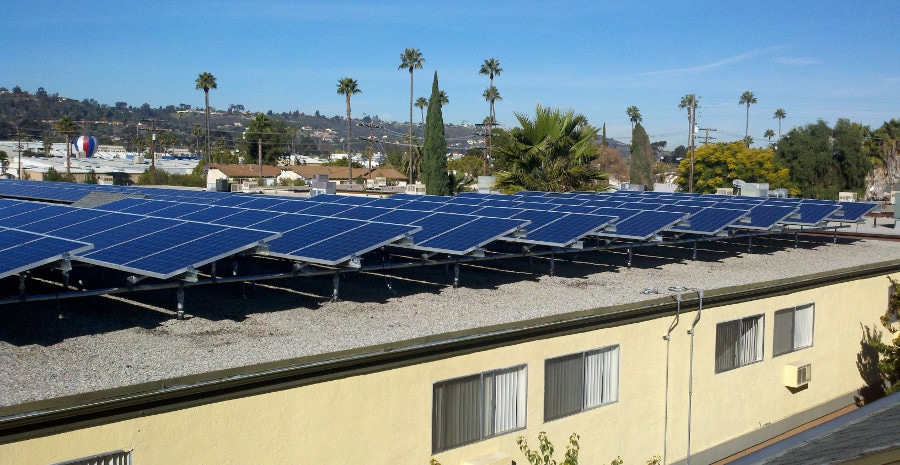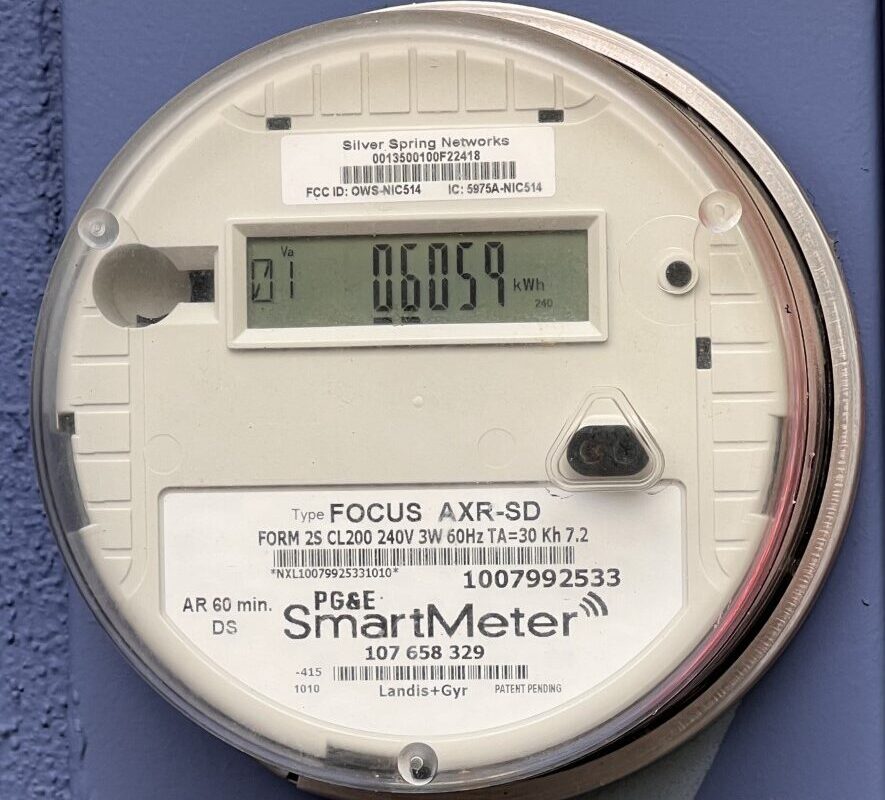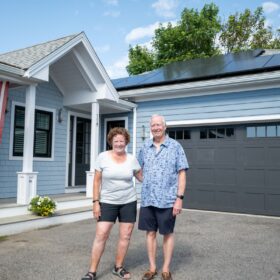The process of creating a solar rebate program for low-income apartment buildings may not have been quick, but advocates are not complaining about the final outcome. Yesterday California regulators approved a visionary program that could grow the amount of solar on such buildings nearly seven-fold by 2030, and which will allow tenants to receive credits for the electricity produced by such systems.
The Solar on Multifamily Affordable Housing (SOMAH) program is the final result of Assembly Bill 693, which passed in 2015. The program languished for two years as California Public Utilities Commission (CPUC) dealt with a number of other pressing matters regarding the state’s electricity system, including an overhaul of net metering.
Yesterday CPUC issued a final decision addressing many of the thorny matters which AB 693 did not address, such as program goals, eligibility requirements, program administration and funding, as well as providing guidance for the selection and responsibilities of the program’s administrator. These were mostly laid out in a proposed decision three weeks ago, and the final decision includes minor changes, including adopting incentive levels and a step-down mechanism for adjusting these levels each year.
Under SOMAH, apartment building owners and tenants will be awarded credits through a system called virtual net metering (VNEM), a subprogram of the state’s “Net Metering 2.0” program. The state’s utilities have been directed to set VNEM tariffs for SOMAH, and least 51% of the electricity generated by the qualifying systems must be dedicated to tenants.
Additionally, such systems will additionally qualify for incentives set at a base rate of $3.20 per watt for the portion of PV systems serving tenants and $1.10 per watt for the portion serving common areas. This base rate will be discounted for projects that also claim the federal Investment Tax Credit (ITC) or the Low Income Housing Tax Credit (LIHTC).
These incentives will also decline either 5% annually or by the annual decline in residential solar costs as reported by the U.S. Department of Energy’s National Renewable Energy Laboratories (NREL). This methodology could be changed in 2020 when the program is reviewed.
The program has a few other features which distinguish it from California’s previous low-income solar housing program, Multifamily Affordable Solar Housing (MASH), under which 39 MW of solar has been installed to date. While MASH was funded by the state’s large investor-owned utilities, SOMAH will be funded through California’s cap-and-trade greenhouse gas program.
Additionally, SOMAH is designed so that tenants can share in the benefits, by receiving credits on their utility bill corresponding to their portion of the output of the systems. And to ensure that building owners dedicate as much of the PV system as possible to their tenants, the program provides higher incentives for this portion of the system.
The next steps for SOMAH are the selection of a program administrator by April 30, and the finalizing of a handbook by August 30. The program should officially start in mid-September of next year.
This content is protected by copyright and may not be reused. If you want to cooperate with us and would like to reuse some of our content, please contact: editors@pv-magazine.com.









Will this program be limited to customers of the three large investor owned utilities? If so, a large number of affordable housing properties within city and private utilities will not receive benefit from the program.
I do not believe so. In fact, I recall in the final decision references to utilities that have smaller service areas than the big three.